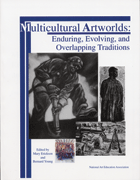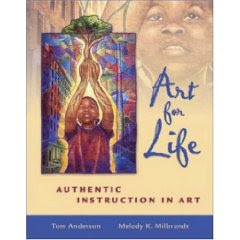“I have considered how Native Americans' pleas to eliminate this practice (of using Indian mascots) have been met with such strong resistance by individuals who seem thoughtful, well educated, and not particularly racist. I wondered why, in denial of compelling arguments against, this use of Indian mascots persists. I concluded that this form of unintended racism is just too much fun to give up, too easy to ignore, too ‘normal’ to abandon. Americans just love their Indians to death.”
“Selected cases involving uses of Indian mascots by non-Native American educational institutions and sports teams provide a context for considering the value systems of those who continue to employ this practice. Impediments to change reframe the problem in a larger context, a context that considers centuries of White privilege and power in this country.”
Selected Cases
“Issues of voice, tradition, impact, and resistance to change permeate these and other cases involving the use of Indian mascots by non-Native Americans.”
Chief Osceola at Florida State University
“…FSU representatives assert that Chief Osceola has the approval of Native Americans.”
“Ashcoff (2000) notes lack of agreement with such a claim, ‘They can always find a hang-around-the-fort Indian to say it's okay,’ says Vemon Bellecourt, president of the National Coalition Against Racism in Sports and Media and a national AIM [American Indian Movement] board member. ‘This issue is larger than the Seminole nation. The mascots are used to represent all Indians.’ (p. 1F)”
Ashcoff points out particularly perplexing problems facing opponents of popular uses of Indian mascots, slurs, and caricatures-harassment and public indifference…”
The Issaquah Indian: Issaquah Seattle
“At the end of May of 2002, the Issaquah School Board moved forward to adopt a new policy that mandates mascots and logos be free from stereotyping, derogatory or offensive connotations, and not likely to divide the community in significant controversy. Some students planned a school-wide walkout and petition drive in protest to Board actions.”
The Washington Redskins
“After 7 years of litigation, the U.S. Court of Appeals for the Federal Circuit recently upheld a 1999 ruling of the U.S. Patent and Trademark Board that ordered the cancellation of federal registration of Washington Redskins trademarks.”
“The Patent and Trademark Board found the Redskins trademark to be disparaging to Native Americans. Federal trademark law specifies that names cannot be protected if they are ‘disparaging, scandalous, contemptuous or disreputable’ (Moreno, 1998).”
“John Paul Reiner, attorney for Pro-Football Inc., which owns the Washington Redskins, originally argued that the term "Redskins" is not a slur and compared it to the use of the word "colored" in the name of the National Association for the Advancement of Colored People (Moreno, 1998).”
“Raymond Apodaca, a former governor of a Texas tribe, compared the word ‘Redskins’ to ‘the 'N word' for African Americans and all kinds of pejoratives that exist for Jews, for Hispanics, for women none of which would ever be accepted or tolerated in relation to sports or anything else.’”
“…the term "Redskins" was originally used by White settlers as a way to count the number of Indian scalps collected by trappers and other Indian exterminators. Native Americans dealing with the Indian mascot issue refer to ‘Redskins’ as the ‘R-Word’ (cited in Moreno, 1998).”
Chief Illiniwek
“Chief Illiniwek, a 75-year-old ‘tradition’ at the Urbana-Champaign campus, and a registered trademark of the university, has been the topic of controversy for 14 years now. One problem is that Chief Illiniwek is dressed as a Lakota Sioux, not one of the original Illini Nations. But more to the issue is that the Chief does not represent any Indian, past or present, and what he does represent is racism and miseducation, sanctioned in a major research institution.”
“Central to the arguments and counter arguments are contested definitions of what constitutes honor, tradition, and racism. Arguments in favor of the Chief include references to his value as a ‘tradition,’ claims that fans ‘honor’ Native culture, emotional attachment to his role as a nostalgic link for alumni, charges of political correctness by a vocal minority, and fear of lost revenues if the Chief is retired.”
“Opponents argue that the Chief is a White-concocted, mythologized caricature of Indians (the noble savage), that misrepresents Native American culture, mocks sacred Native American beliefs and rituals, miseducates the public, and hurts the self-image of Native American children.”
Why Do These Practices Persist?
“For the better part of the 20th century, Wild West shows, Hollywood, the Boy Scouts, advertising industries, public educational institutions, and businesses across the country have banked on their own version of Chiefs, Braves, Spirit Guides, and Squaws.”
“Authenticity and history are forsaken in favor of commercial and entertainment interests. But in reality, most Anglo-Americans actually know little if anything about the beliefs, values, cosmology, or cultural practices of any Native Americans, past or present.”
“Indian Mascots are still used in over 1500 public schools throughout the United States.”
“Teachers and students, parents and children in and near these communities experience these and other stereotyped images in television broadcasts, print media, on billboards, tee shirts, baseball caps, boxer shorts, silk panties, and toilet paper.”
“Matthew Richter explains that Indian mascots first came into use by White schools in the 1920s, in conjunction with practices emanating from the Indian Boarding Schools. By Richter's account, Native American children were forcibly removed from their homes and incarcerated in institutions that were in reality work camps run by Christian churches. These children were forced to work to produce salable goods for hours each day and attended school only 4 hours or less each day, doing what Richer characterizes as ‘pseudo academic exercises to create a feel good and economic enterprise for White America.’”
“Vernellia Randall, professor of law, writing for the Transnational Racial Justice Initiative, explains that the continued contemporary practices associated with the uses of Indian mascots, imagery, and performance are rooted in what Randall calls the persistence of white privilege- ‘a system that accrues to whites or European Americans greater wealth, resources, more access and higher quality access to justice, services, capital-virtually every form of benefits to be reaped from U.S. society-than other racial groups’ (Randall, 2001, para. 2)”
“Randall argues that the U.S. Government must recognize its culpability in related issues of racism and inequity and immediately institute comprehensive remedies and reparations that address the deep and abiding racism, repression, and discrimination.”
Why Should Art Educators Care About Indian Mascots?
“Fictional Indian mascots, who live in an imaginary past and mythological present, teach non-Natives very little about Native people and culture. Instead, Indian mascots promote the premise that everything ‘real or valuable’ about Natives belonged to a long lost era, before the race was overtaken by manifest destiny. Real Natives face real problems that are neither romantic nor extinct... It is an undeniable and documented fact that Native-based mascots teach and perpetuate stereotypes which directly undermine the self-determination, dignity and well-being of Native people, as well as create a hostile school, work, economic and social environment for over two million Native men, women and children... Native youth suffer the most, having the highest teen suicide and drop-out rates of any racial or cultural group. Prejudice derived directly from stereotypes has been cited as the primary factor for all of the above. (Beaudet, cited in Garippo, 2001, Section V.
Summary Position of the Illinois Native American Bar Association)”
“It's easy to ignore this issue of miseducation and social inequity. These are missed opportunities for dialogue with students about real problems associated with the power of images and for a beginning of the dismantling of the value system that allows one group of individuals to depict another with such intellectual dishonesty and hostility.”
“Art teachers and teacher educators need to become more informed about the issues surrounding Indian mascots and to make our collective position clear on the use of race-based mascots and imagery in educational institutions and sports teams. Our silence on this issue, even if not intentional, is in effect a form of tacit racism and cultural violence…”
“A good beginning point for addressing this and other issues based curricular goals would involve the study of the artwork of contemporary Native American artists who have addressed the issue of misrepresentation of cultures in their work.' Framed within a thoughtfully constructed multicultural art program, the study of Native American art, history, cultural values, and contemporary issues would enrich our understandings about the power of art, deepen our understanding of our history with First Nations peoples, and provide more productive frames of reference as we co-construct our collective futures.”
“Beyond aesthetic appreciation and cultural consumption of Native American art, history, and cultural practices, we are compelled to seek social, political, and economic justice and equity on behalf of those we claim to appreciate.”
Footnote
“The work of contemporary Native American artists including, but certainly not limited to Ron Anderson, Judy Baca, Karita Coffey, Jessie Cooday, Rick Glazer Danay, Rupert Garcia, Carmen Lomez Garza, Ester Hernandez, Edgar Heap-of-Birds, Allan Houser, Edna Davis Jackson, George Longfish, George Littlechild, Yolanda Lopez, James Luna, Dan Naminga, Jaune Quick-to-See-Smith, Roxanne Swentzell, Charlene Teters, Hulleah Tsinhahjinnie, Kay Walkingstick, and Randy Lee White are reasonably accessible on-line or in books and journals.”





